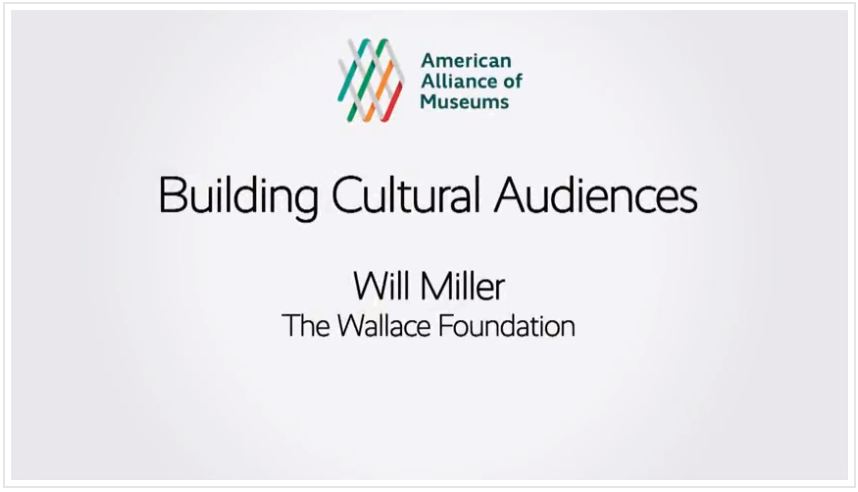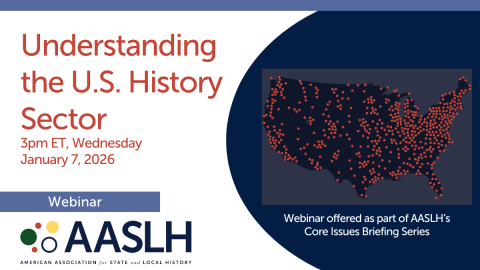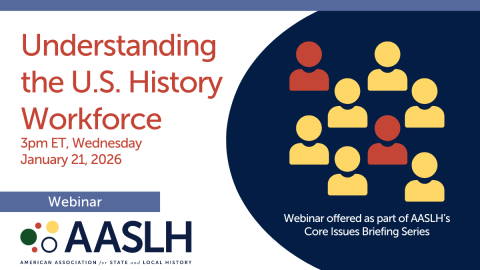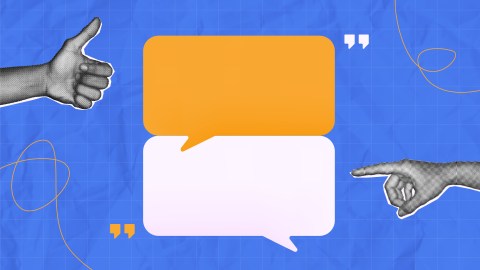
Delivered March 22, 2016, at the Building Arts Audiences: The Philadelphia Summit, Will Miller presents findings from the Wallace Foundation report, The Road to Results: Effective Practices for Building Arts Audiences (2014). Watch the video from the summit below.
Will Miller is president of The Wallace Foundation.
Transcript:
00:07 Will Miller: So what I’m gonna talk about is, after some brief background on the Wallace Foundation, explain some of the reasons why we came to audience building as a focus for our initiatives in the arts. And then spend the bulk of my time on the lessons from The Road to Results, as Laura mentioned. And then, a little bit about how market research can look costly when viewed only as an expense, but looks a little different when you think of it as an investment. It has a return on it if it’s used effectively and connected to action. And then, I wanna try to leave some time for your questions.
00:46 So the mission of the Wallace Foundation reflects the interest of the folks who made the money. DeWitt Wallace and Lila Acheson Wallace, they had many philanthropic interests, but, in accord to DeWitt Wallace’s interest was youth development, and to Lila was the arts. So our foundation today has a mission of improving learning and enrichment for the least advantaged children in the United States and the vitality of the arts for everyone. In the arts area, we came to building audiences by focusing on the audience of arts organizations. We did a market research study in 2014, of 400 arts organization leaders, and they identified out of a list of 27 possibilities their top ten challenges. And it struck us that these grouped naturally into a couple of topic or themes. The biggest ones were fundraising and building audiences.
01:46 That doesn’t surprise anyone ’cause they’re connected to two revenues, right? Earned and contributed revenues, and they’re closely intertwined. Of course, as we’re all aware, participation rates in the United States, in the arts, have been declining, at least as defined by the National Endowment for the Arts in their survey every four years. Since 1992, the percentage of the population attending, what the NEA defines as a benchmark, arts has declined from 41% to 33% in 2012. So with that in mind, we had looked into our own experience, the work of our grantees to see what we could tease out that would be helpful to the field and that could guide our work going forward. The Wallace Excellence Awards were a series of grants, made between 2006 and 2014, a period, I should note that included the financial crisis and the Great Recession. So keep that in mind when we think about the results here. We funded 54 organizations to do research on audiences that they identified as wishing to attract. In order to understand the specific barriers that were preventing them from coming, and to then design interventions or programs or experiments that would overcome those barriers and cause those people to come to their organizations. A requirement of some of these grants was that they collect data on the audiences and whether or not these efforts worked. There were 46 arts groups, for which we were able to get reliable data.
03:31 And interestingly, among those, what we found in spite of the environment that the median size gain in audience of those who were trying to grow their overall audience was 27%, in the middle of the financial crisis. For those looking at a particular target audience, it was 61% average growth, but that’s from a low base. Usually if you’re targeting people who aren’t coming, you have a fairly low number. But still, a 60% increase is pretty spectacular. From all of that, we were able to develop a number of tools that we hope are of use to the field, 10 specific case studies. I’ll be drawing from three of those or four of those in a minute. And then two broader reports, The Road to Results, which looks at nine common themes from the most successful of these organizations and a practical guide to using market research called, Taking Out the Guesswork. These and all of our materials are available for free on our website and on your table.
[laughter]
04:43 From the work of these 46 organizations and the 10 in-depth case studies in particular, there were five general principles that we distilled. The first is that audiences are actually open to being engaged in new ways. In spite of the declining participation across the disciplines in total, there is a hunger out there for new experiences and being challenged. But there are no silver bullets. There’s no one way to do it that works in every context. It’s a long game. It’s a marathon, not a sprint. It really helps if the entire organization is aligned behind the effort. If it’s just a effort of the marketing organization and the artistic side thinks it’s actually just gonna taint what they do, that’s not gonna work. Everybody has to be aligned around the same goals. It’s very helpful to use data market research to understand exactly what the barriers are rather than guess. And that’s a point I’ll return to later. And if it doesn’t serve the mission of the organization, it’s not gonna be authentic, and it’s ultimately not gonna work.
06:00 Because people come to great arts organizations because of the great art and their missions, not in spite of it. So, those were general things. We also looked, though, at the practical level at how do you do this. And that’s what led to the identification of nine effective practices that Bob Harlow, a researcher, distilled from the work of these 10 in depth case studies. They group into two broad themes. One is creating meaningful connections with the audience, which is the outward facing element we heard about just a minute ago from Timothy. But they also, there’s a group that talks about this organizational alignment piece being, having the organization ready and able to support those goals. I can’t cover all nine of these today. So I’m gonna focus on three of them: Identifying target audiences, the use of market research, and organizational alignment. Of course, you can learn a lot more about all of them in the reports on your desk and the case studies. So let me start with identifying audiences, and I’m gonna use here one of our case studies from the Steppenwolf Theatre Company in Chicago. And if anybody didn’t see August: Osage County, you missed a great production.
[laughter]
07:28 The issue in front of Steppenwolf that they were tackling was the decline of subscription sales. Across all regional theaters, there was a 14% drop from 2005 to 2009. This is a problem in part because single ticket buyers have a lower margin, in business terms, they cost more to get every dollar of revenue, about 23 cents, compared to 13 cents for a subscription ticket, by some studies. So the question in front of them was, how do we deepen engagement with both subscribers and single-ticket buyers to keep the renewal rate on subscribers up and to turn single ticket buyers, at least behaviorally, into multiple purchasers, more like subscription people? They did a number of focus groups with their both subscribers and single-ticket buyers and were surprised by the first finding here. And that is, across the board, a pretty good swath of their single-ticket buyers were as adamant a Steppenwolf fan as their subscribers were. So connection and engagement wasn’t the barrier, which I think was one of their starting assumptions. And across both groups, they all consider themselves to be lifelong learners who wanted to be challenged and intellectually engaged by the theater. So that gave them some clues as to a strategy going forward.
09:00 They called their strategy “the public square,” by which they really meant using the theater as a place to, where ideas could be revealed, explored, and where people could be challenged and grow, as a collective social experience. The way they implemented that was at every single performance, every night, they have a post-show discussion, which focuses not on the technique, the costumes, the makeup, the lighting, but on the themes in the play and the reactions of the audience to that, in their own lives and their own thinking. And so one of the things they did is, they didn’t have the actors lead these discussions, which is the more normal pattern. They had the critics and people, the dramaturges from their organization, come out and talk about the themes and the content and the art itself. They also retooled their website to have a lot more content on the themes in the play and how audiences reacted to them. They understood that socializing was an important part of what these audiences wanted so they created these as free social events. And importantly, they did not make this a privilege of membership, so it wasn’t open only to subscribers. Because they had discovered that single ticket buyers had just as much of an affiliation, they were trying to grow the sense of affiliation so it was open equally to everybody.
10:42 They found that they could get 13-15% of the audience to stay after each show to have these discussions. And in a time where online websites were growing, regional theaters and interactions with the downloads, and visits at about 6%, their growth was 11%. They were successful in getting the non-subscribers to buy tickets to subsequent shows at a 61% higher rate than they had before, so they considered that a good outcome. They also found that their subscription renewal rate was 80%, which is seven percentage points higher than the national average. So it had a beneficial affect on both sides. Now, one of the things that often inhibits organizations from aligning across the entire organization behind an effort like this is a fear on the artistic side that this means somehow we’re dumbing down, or we’re going to have the audience tell us what to put on and it’ll be The Nutcracker, every single time, right?
[laughter]
11:53 That did not happen here. What the artistic side of this house found was engaging in authentic, deep conversation with the audience was a meaningful experience for the artists. This is the artistic director of Steppenwolf saying, “It was incredibly moving to hear the audience members talk about their own histories and the way the play impacted them personally.” So it was a mission-enhancing effort. So the take-away was the organization started off worrying about subscriptions going down, found that wasn’t really the issue. It was, how do you build a deeper relationship with both single buyers and subscribers? And they found ways to do it, and it showed up in the data.
12:39 So now talking about market research, I’m gonna use the example of The Pacific Northwest Ballet, in Seattle. They were keenly aware of those NEA statistics and the drop of 35% since 1982, in per capita ballet attendance. And their new director, Peter Boal, who arrived in 2005 said, “Not only for Pacific Northwest Ballet but for ballet as a discipline, I wanna focus on teenagers and get them connected to the ballet.” Their efforts in this area, however, had been underwhelming. They had done it mostly around price. The assumption was the main barrier to coming was the cost of the tickets so they offered deep discounts, but they actually didn’t get that many. They got some, but not the level of teenage engagement that they were hoping for.
13:32 So they did a survey and price was a practical barrier but there were a few perceptual barriers, too, like, “It’s boring. All ballets are the same, it’s too stuffy and formal”, and that was a wake up call to some of the folks who did not view ballet this way. They then having seen this at the survey level said, “Well, what’s beneath that?” And they held focus groups and they came up with some better understanding such as, in the young adult space, “I hesitate to go to something like that because I feel I might get in there and then go ‘Wow! I feel like an idiot.’ I don’t know any of these French terms for these various poses, so I’ll feel inadequate.” Or, “It seems like a very formal evening, something you maybe wouldn’t do with a large group of friends.” This is a common pattern across research of younger age groups, they do things in packs. So I often observe this with my daughters. My wife and I aren’t gonna go out on a Thursday night unless we know we’ll get in to the restaurant at 6:30 and we know we have tickets. They will happily go stand in line for two hours at a club and not even get in because standing in line is the social experience. And that’s okay. So it’s just different preferences and you can’t connect with audiences if you do it out of your own assumptions, you have to get under theirs. Or my favorite from a teenager, “It’s like sitting with someone else’s parents.”
[laughter]
15:09 So Peter Boal who was worried about a proposed rebranding effort as being nothing but sort of slick marketing, got his mind completely changed about this by sitting on the back side of that one-way mirror and watching a couple of focus groups with teenagers and actually listening to them make remarks like that. So he got very into it and began meeting regularly with teenagers himself, which this is a photo of one of those meetings, and The Pacific Northwest Ballet created a couple of things that responded directly to that desire for socialization. Socializing opportunities and the specialness of the event, the experience, they decided that whenever they premiered a new work of dance, they do the very first performance in a teen-only free event. So it became a special thing for them and they would also… Dealing with that perception of not belonging, they actually put in the program and add to the regular ballet folks saying, “If there is a teenager next to you, say hi, be nice, make them feel welcome.” And they worked with the ushers, to say, “If you see a teenager, reach out.” It was a holistic approach to it. The rebranding was also important.
16:35 If you look at their website page before what you see for Romeo and Juliet, is an emphasis on the art form. The technique. What the research told them, younger people wanted especially ’cause they didn’t want to look like they didn’t know what they were doing is intimacy, emotion, and a kind of connection. So they rebranded, around images that connoted the emotional content of the ballet as opposed to the great technique. In fact, on a brochure one of the teenagers reacted to the old brochure of, “That’s a really weird pose, it looks like the dancer is in pain.” So it just wasn’t connecting. So the results… This is something… Seattle has something called “Teen Ticks” where on the day of a performance across a wide variety of performing arts organizations, a teenager can get a really deeply discounted ticket. Ballet wasn’t selling well on that platform in 2008 and ’09, when they’re beginning, and they more than doubled the sales through that particular channel. And more importantly to them, the number of teenagers and young people they got coming back to performances rose from about 500 up to the 800 level and stayed there. So they thought that was a good outcome.
18:02 So let me turn to organizational alignment, and here use a local example, the Fleisher Art Memorial. I do this with some hesitation. You all know a lot more about it than I do, so if I don’t quite state something right… And the folks from Fleisher are in the audience, so I apologize in advance if I say anything not quite right. But this organization was founded in the late 19th century as a way to bring arts education to the immigrant population in the Southeast Philadelphia area. And its mission today is to make art accessible to everyone, regardless of economic means, background, or artistic experience. But the area has changed. It’s still an area of lots of immigrants, but they’re not from Europe anymore. They’re from Latin America, China, and Southeast Asia. They noticed a pattern that only 21% of the visitors to Fleisher at the building for their programs, came from nearby neighborhoods. Their offsite programs, out in the neighborhoods, which were much more successful at engaging the folks from that neighborhood.
19:15 So they did research on these two zip codes here in Philadelphia and found that there were number of barriers to the residents participating at Fleisher. There was limited awareness that Fleisher existed, it looks like a church, they didn’t understand it was an art school. There were an assumption where, “I can’t afford it.” At the time this was done, all of the programming, all of the marketing material was in English, and people who either didn’t speak it or had limited English capabilities, basically, all that added up to a sense, “That’s not for me”. So the strategy that was developed was to do a lot of outreach to the specific targeted communities, showing up at their community festivals, and other public events, advertising in the neighborhood press and in the non-English language newspapers, making demonstrations of the art available, and simplifying the course catalogs. An important thing here that they learned that the residents of this neighborhood did not work a traditional work schedule so in order to have the classes available at times when they could take it, they needed to change the course schedule.
20:36 They also did a lot of work internally, around training the very first folks who have an encounter with the visitors at the front desk, around being welcoming and how to engage with people from different backgrounds. Did a number of community-engagement workshops, baked it into their onboarding and recruiting processes for new hires. It was not without its internal challenges, they had to engage directly, and straight-forwardly with staff who were worried about, “Is this gonna affect the quality of our offering?” “Are we gonna drive out the people who are here now by bringing a new set of folks in?” And importantly, they did a structural change. It used to be that those offsite programs out in the neighborhood were run by one division of the organization and the onsite by another one. And since that was a source of some of the silo problems of communication between, they merged them into a single department.
21:37 These are survey results from a question: In your opinion, how much does Fleisher care about serving the following groups? What you can see is between 2009 and 2012, they made some real headway on perceptions of caring about South Philly residents, people who don’t speak English well, people just getting started in the art, and people of non-US cultural heritage. And those perceptions are really important things to change as a precursor to being able to increase engagement. There was an increase in the enrollment from the targeted neighborhood, from around 790 to a little over 1,100. Not as much of a demographic shift in this timeframe as, I think, was hoped for. But that goes back to it’s a long game, you’ve gotta stick with it for a long time. It takes more than just five years or four years to change perceptions at that fundamental level.
22:36 So to illustrate the issue of the return on investment that is possible, from the skillful use of market research, I wanna use another Philadelphia example from The Clay Studio. They had become concerned that the core audience of college-educated professionals and retirees was aging and they weren’t getting very many newcomers in, so there was a worry about sustainability of the organization. And they wanted to focus on the growing number of young professionals who work in the Old City arts district. And after a number of failed experiences, experiments, they found success in something called, Date Night on a Friday, where, novices could come and have a hands-on experience with ceramics in this informal environment, and they decided to conduct more research. They used a grant that we gave them under the Wallace Excellence Award to really explore this young professional audience, and what they found was a couple of themes. One, is these audiences don’t tend to like to commit long in advance, so they wanted shorter, easier, more digestible courses. They wanted it to be a social event. Again, that theme, that shown up across multiple bodies of research. And they were really focused on “What’s the experience?”
24:00 The Clay Studio looked at all its marketing materials. What they were marketing was incredibly beautiful ceramic objects, not the act of making the ceramics themselves. So this is a complicated chart, but it tells a great story, so I’m gonna go through it quickly. From 2004 to 2006 is that time before the Date Night Experience in the market research, and you can see that the school revenue was flat in that period. They began doing desk research in 2008, which developed the insights around, need drop-in opportunities and shorter courses, which they began to implement. In 2009, some qualitative research on non-attendees, that suggested they needed to create unique experiences and get the marketing aligned with this experience-over-object kind of approach. They followed that up with new visitor qualitative research in 2011. And over the course of this period, they took the school revenue from the $150,000 level up to just shy of $400,000. Cumulatively, over the years between 2007 and 2014, this added $894,000 of revenue to the organization at a total cost over that time period of market research, of about $375,000. So it’s about a two-for-one return, and it wasn’t $375,000 all at once, it came in increments of like $38,000 and $25,000. So, let me stop there and see what…








